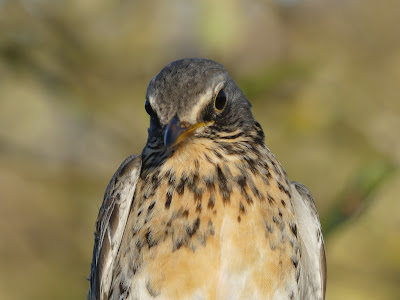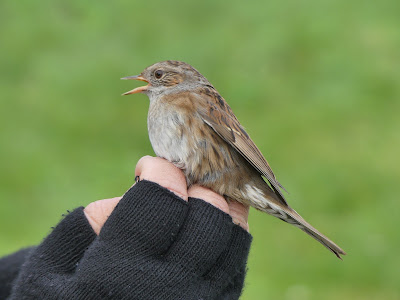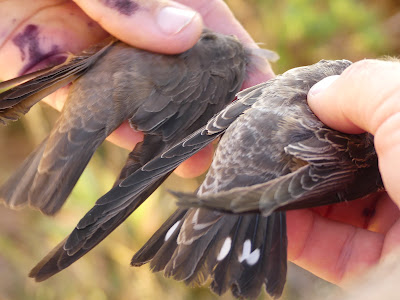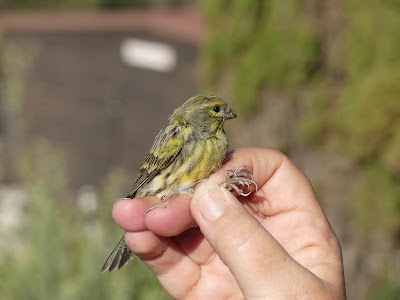Juvenile Shag ringed and released on 27th at Wells-next-the-sea
The week of the 23rd of October saw some unusual movements and sightings of European Shag. The unusual behaviour may be linked to Storm Babet (weather warnings issued for 18th to 21st October) that led to the most severe and widespread weather impacts of this year so far. 60+ shag were recorded heading south, offshore of Saltfleetby/Theddlethorpe Dunes on Monday 23rd with a further report, from Spurn, of 226 birds headed south. The twitter post by John Hewitt refers to birds "just plonking down anywhere they really shouldn't".
undisclosed car park
Two Shags resting at ponds, Spurn
Report of a ringed bird in bins at Peterhead, Aberdeenshire by Paul Reynolds.
Ringed in Edinburgh. Flew off unaided.
On the 25th, David Steel posted about the unusual places that storm driven birds may turn up, and posted a brief video from the old lighthouse engine room on the Isle of May.
https://twitter.com/SteelySeabirder/status/1717165828183834631
This bird was successfully released to the sea the following day.
A tweet by R.Stephenson on the 25th referred to a bird found 30 miles inland at Bolton on Swale Gravel Pit.
European Shag, R Stephenson
On the 25th we were monitoring for pipits in the marsh fields at Deepdale Farm, Burnham Deepdale, Norfolk and were sent this interesting image of Shags on the farm topper. They appeared to be looking for something to eat as the tractor worked the field. Their appearance away from the sea seemed to be linked to the dense sea fret we were experiencing at the time.
Deepdale tractor attracts three juveniles
The farm staff saw all three birds fly into a hedge and on our advice, that they may not be able to get airborne, tried to find them later that day and on the day following but there was no trace.
Our post on Twitter of the shags at the farm attracted a lot of attention, including a request to look out for colour ringed birds. There had already been some other odd reports including one bird that tried to enter a house in Nottingham and another that was in a garden in Lincolnshire.
A report of a dead bird with darvic RAX at Easington Lagoons showed that being forced inland is a risky business, leaving birds extremely vulnerable even when they are able to find a body of water.
RAX, ring on the Isle of May, June 2023 Entangled in wire mesh
Other reports on the 26th included four birds photographed in a park in Sheffield.
Photo by Tony Holme
Dan Martin's image of two of the four birds showed a darvic ring RZW.
The ringed bird had been ringed at the nest on the Isle of May in June.
By the 27th three birds were showing at Hykeham Pits and other reports of single birds from a smattering of locations. We got a call from Estelle at Deepdale Farm to say she had found a Shag walking down the farm road. Continuing in that direction leads to the coast, but it's quite a distance for webbed feet and involves crossing the main coast road. Estelle picked the bird up and called us after getting it safely into a box.
It wasn't long before we arrived there, making another check for the birds seen on Wednesday, before taking it to the quay at Wells-next-the-sea where the tide was coming up.
The bird was keen to return to the water and began feeding and drinking immediately.
Back in a familiar environment
The following day there was a report of 4 Shags in the channel at Brancaster Staithe, only about half a mile from Burnham Deepdale. Perhaps the three tractor travellers plus the one we took to Wells have reunited.
3 of 4, taken by Tom Lowe at Brancaster Staithe

























































